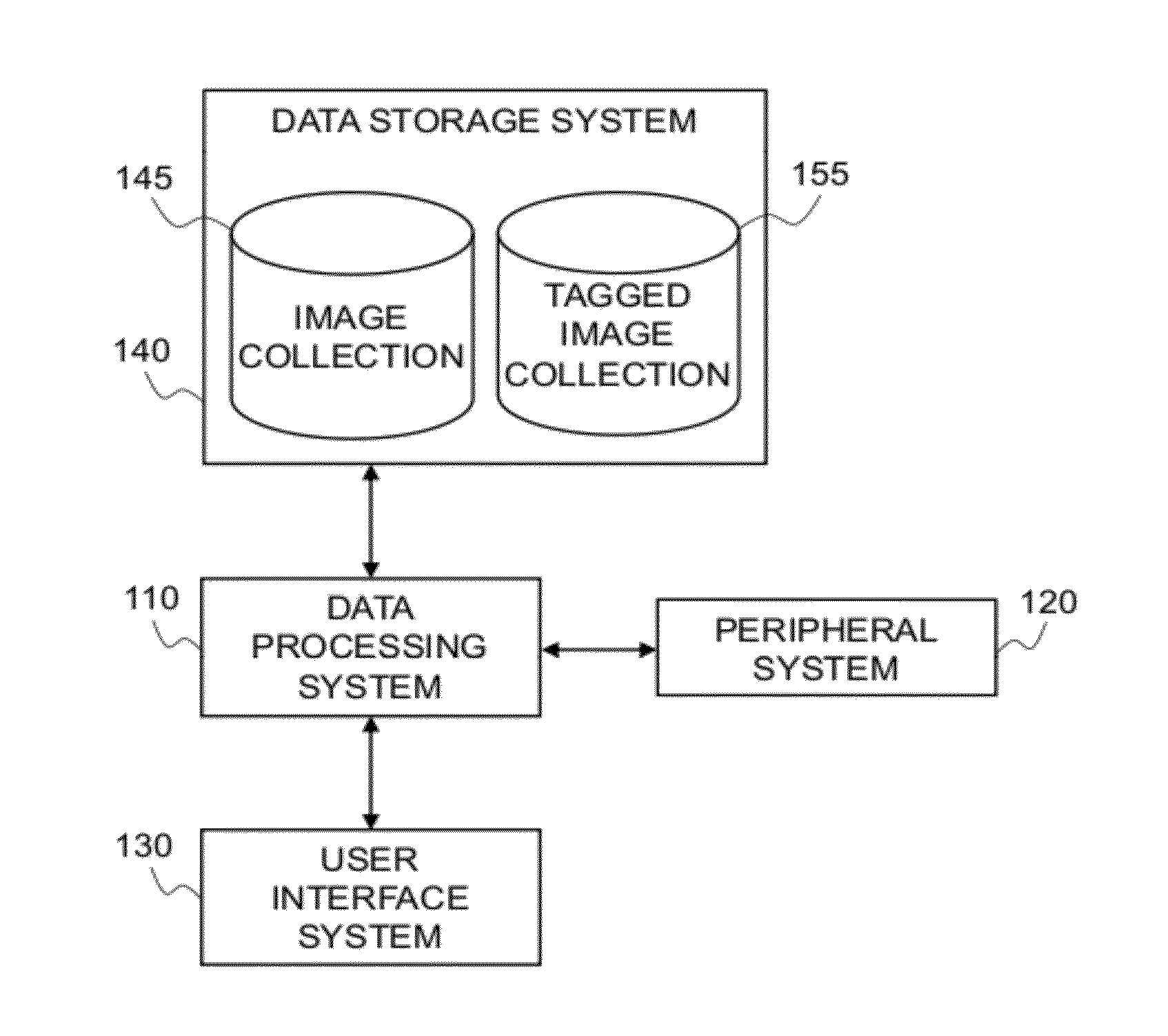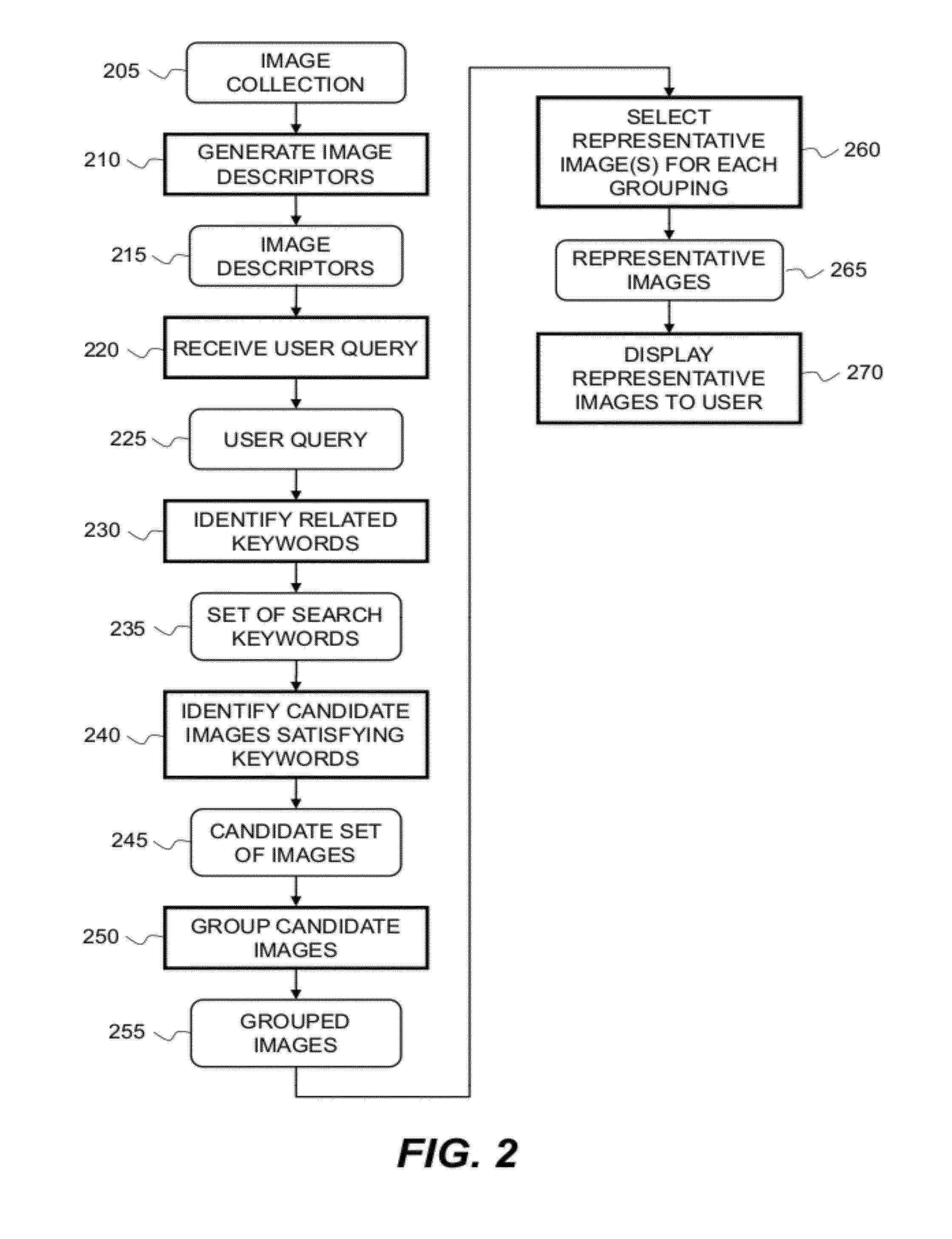Identifying particular images from a collection
- Summary
- Abstract
- Description
- Claims
- Application Information
AI Technical Summary
Benefits of technology
Problems solved by technology
Method used
Image
Examples
Embodiment Construction
[0021]Searching for images in personal image collections is becoming increasingly difficult, especially as image collections grow to include thousands or tens of thousands of images. A user can have in mind some concepts, and wish to retrieve images associated with that concept. Or an individual can recall a specific event, scene or object and wish to retrieve any corresponding pictures they might have. However, unless the user has manually annotated the images in their collection according to some concept ontology, they typically are unable to search based on those concepts.
[0022]Researchers have developed a limited number of algorithms for automatically labeling images with specific concepts from a limited vocabulary, using trained concept detectors. Once such algorithms have been used to label images, the images can then be searched using search terms from the corresponding concept vocabulary. However, the concept vocabulary is typically very small and often generic in meaning, l...
PUM
 Login to View More
Login to View More Abstract
Description
Claims
Application Information
 Login to View More
Login to View More - R&D
- Intellectual Property
- Life Sciences
- Materials
- Tech Scout
- Unparalleled Data Quality
- Higher Quality Content
- 60% Fewer Hallucinations
Browse by: Latest US Patents, China's latest patents, Technical Efficacy Thesaurus, Application Domain, Technology Topic, Popular Technical Reports.
© 2025 PatSnap. All rights reserved.Legal|Privacy policy|Modern Slavery Act Transparency Statement|Sitemap|About US| Contact US: help@patsnap.com



